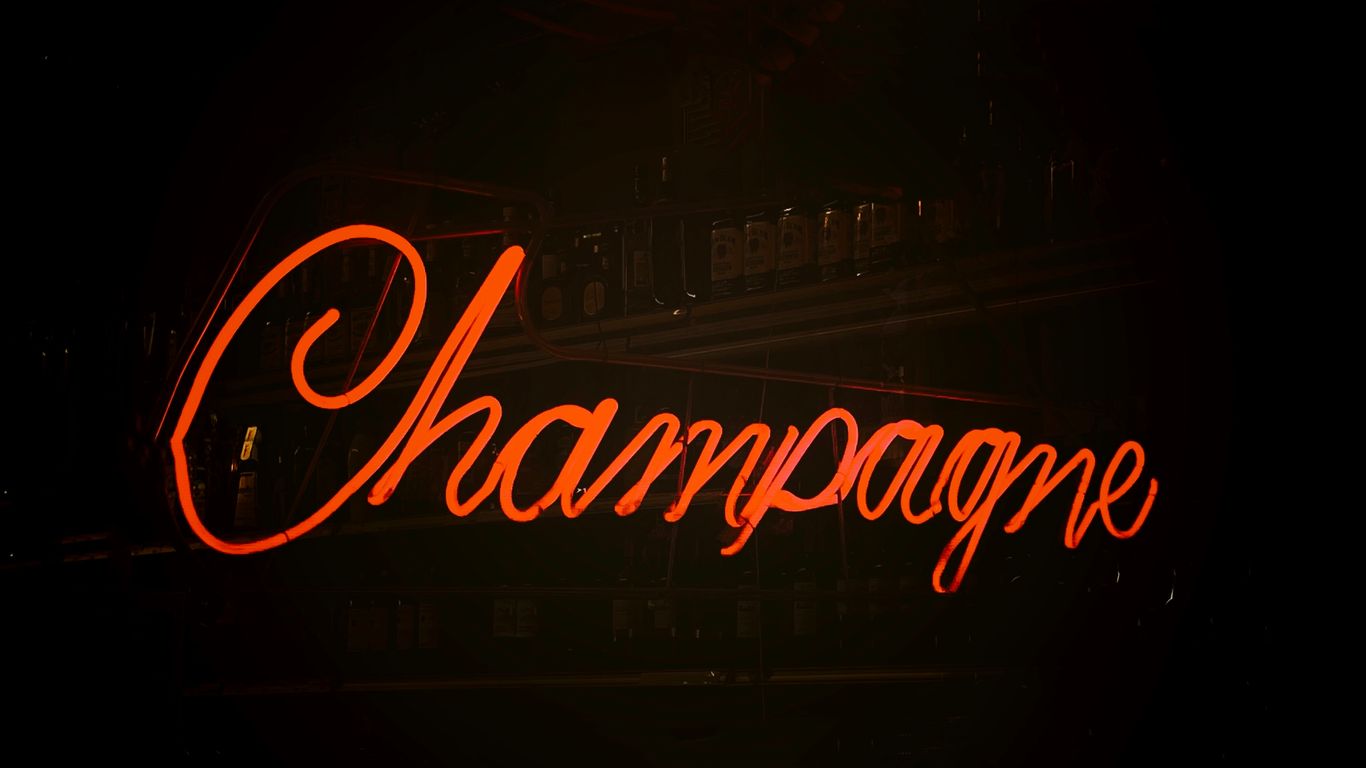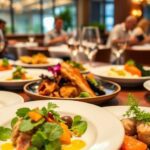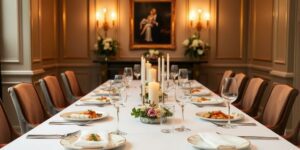Ever thought about having an entire Champagne Châteaux to yourself? Imagine gathering your closest friends or family for a private getaway where you have the whole estate, the cellars, and a chef just for your group. It’s not just about the sparkling wine—though there’s plenty of that—it’s about slow mornings, cellar tours, and dinners where every dish is made just for you. If you like the idea of privacy, good food, and a bit of history, these Champagne Châteaux experiences are something special.
Key Takeaways
- Booking a full Champagne Châteaux gives your group total privacy and exclusive use of the estate.
- Cellar tastings are led by expert sommeliers who share rare bottles and stories behind the wines.
- In-house chefs can create custom menus, including options for plant-based or wellness-focused diets.
- The historic cellars and grand dining rooms set the scene for memorable meals and events.
- Extra activities like hot air balloon rides, yoga in the vineyards, and tailored fashion advice make the trip even more unique.
Exclusive Champagne Châteaux Buyouts for Private Groups
Booking an entire Champagne château is all about creating a sense of total seclusion and comfort. Whether it’s a family reunion, a corporate retreat, or just a group of friends seeking a truly special escape, guests can decide everything from arrival times to daily schedules. You pick who’s with you, which rooms you want, and how each space will be used. It’s like having a grand country house—but with luxury staff on hand and no awkward run-ins with strangers in the hallway.
A few ways stays can be tailored to you:
- Welcome amenities personalized for each guest
- Custom meal times and private dining anywhere on the grounds
- Activities scheduled at your pace, from cellar tours to yoga
- Exclusive access to all entertainment and wellness options
When you have the entire château to yourselves, it suddenly feels more like your own grand vineyard estate than just a hotel.
The Champagne region’s châteaux are packed with stories—think ancient stonework, grand staircases, and secret escape tunnels from centuries past. An exclusive buyout means your group has every inch of these historic estates, inside and out. Host small gatherings in the library, wander gardens undisturbed, or just relax in salons where vintage Champagne was poured before you were born.
Here’s what sets a private estate stay apart:
- No outside guests anywhere on grounds
- Every bedroom and suite is yours to allocate
- Private terraces and salons for your group only
- Outdoor spaces—vineyards, pools, or picnic lawns—always reserved for you
Why go for a total takeover rather than just book a few rooms? Here’s a quick comparison:
| Partial Booking | Full Buyout |
|---|---|
| Shared spaces with others | Private access everywhere |
| Fixed meal schedules | Custom mealtimes & locations |
| Limited privacy | Complete discretion |
| Hotel feel | Home-away-from-home experience |
The core appeal lies in control and comfort. There’s no waiting for a table, no worries about who hears your laughter echoing in the hallways, and no awkward small talk at breakfast. Every last detail is yours to decide—and the châteaux staff are there only for your group’s needs, blending attentive service with the kind of quiet that can make a weekend feel like a true retreat from the ordinary.
To sum up, a private buyout of a Champagne château isn’t just about luxury—it’s about peace of mind, freedom, and the fun that comes with having an entire piece of French history all to yourselves.
Immersive Cellar Tastings at Champagne Châteaux
Guided Tours by Renowned Sommeliers
Once you step into these Champagne châteaux, you’re not just led around by anyone. Locals who know their bottles, the sommeliers, actually walk you through vaulted cellars stacked floor to ceiling with bottles aging in the cool air. You get personal stories and hands-on explanations about how each label came to be. Sometimes they’ll invite you to try an unlabeled bottle or a barrel sample, which feels like getting in on a secret. It’s honestly less like a scripted tour and more like a chat with someone who’s watched every harvest.
- Insights on soil, grape, and microclimate
- How to identify aging aromas and cork "pop" nuances
- Tips for choosing rare or boutique cuvées
Sampling Rare and Vintage Cuvées
Champagne tastings go way beyond what you’ll find at a supermarket. You actually get to sip those rare vintages that maybe only a handful of people outside this estate have ever tried. They’ll usually line up a range so you can get a sense for how dramatically the house’s style can change over time.
| Cuvée Vintage | Production Year | Tasting Profile |
|---|---|---|
| Prestige Cuvée | 2008 | Bright, mineral, lasting |
| Réserve Brut | 2012 | Creamy, baked apple, rich |
| Special Edition | 1996 | Toasty, deep, extremely rare |
Sometimes you find a bottle that nearly knocks you off your feet— not for rarity but for that unexpected rush of flavor. It’s a pretty wild feeling.
The best part is watching the expressions around you as everyone discovers their own favorite sip. There’s a bit of polite nodding at first, and then full-on excitement.
Learning the Art of Champagne Making
The cellar tasting is just part of it. You’ll actually get to see the whole process, from how grapes are sorted to the riddling racks and the dramatic moment when the lees are popped out and the final cork goes in. Learning about champagne here isn’t stuffy—it’s practical, sometimes messy, and usually full of unexpected steps you never imagined.
- Step-by-step look at hand-turning bottles
- Differences between traditional and modern methods
- Why every Champagne house guards its blending secrets
A lot of visitors end up leaving with a whole new appreciation for the effort in every glass. And honestly, after you see what goes into those bubbles, regular wine just doesn’t feel the same anymore.
Meet the Chef: Culinary Excellence in Champagne Châteaux

You probably expect Champagne châteaux to roll out the red carpet with grand gestures, but what’s genuinely surprising is just how much the kitchen becomes the heart of these private escapes. A château chef does more than just cook – their menus capture the spirit of the region and the changing seasons, making every meal a small event.
Profiles of Resident and Guest Chefs
Most Champagne château chefs have fascinating backgrounds. Some worked in tiny family kitchens, others spent years in Michelin-starred restaurants across Europe. You might find a local chef who’s been foraging nearby forests since childhood, or a guest chef who just flew in from Tokyo after running a pop-up in Paris. Each brings a unique approach, a mix of old-world technique and fresh ideas.
Some common traits:
- Deep connection to Champagne’s food traditions
- Experience in top culinary capitals
- Curiosity for experimenting with local ingredients
Signature Menus Crafted for Your Event
Forget the rigid menu options of big hotels; at these châteaux, dinner is about you. Chefs curate everything, often starting with a chat about your preferences or your celebration’s theme. They might recommend sparkling wine and caviar pairings, or a rustic multi-course meal with local trout, garden vegetables, and maybe even a surprise dessert.
Here’s how a signature menu often takes shape:
- Chef meets with your group or organizer for input
- A tasting menu is sketched out, often around the champagnes in the cellar
- Adjustments are made for seasonal produce and special requests
- Final tweaks happen day-of, based on what looked best at market that morning
Incorporating Local and Seasonal Ingredients
Chefs here don’t just work with what’s on hand – they hunt for it. The kitchens source fresh produce from their own gardens, nearby farms, and specialty suppliers. If wild mushrooms are having a good year, they end up on your plate. If the first broad beans of spring hit the market, expect them to appear at lunch.
A quick look at the local and seasonal sourcing approach:
| Ingredient | Season | Source |
|---|---|---|
| White Asparagus | Spring | Local farms |
| Wild Mushrooms | Autumn | Forest foragers |
| Strawberries | Summer | Château gardens |
| Duck or Guinea Fowl | Year-round | Regional farmers |
| Hazelnuts | Early Autumn | Village suppliers |
Finding a chef who cares about the story behind each ingredient changes your perception of dining – you taste not just the food, but the landscape itself. And somehow, it’s always better with a glass of champagne in hand.
Curating Bespoke Tasting Menus with the In-House Chef
Creating a tailor-made tasting menu with the château’s own chef is honestly my favorite part of a Champagne escape. The chef isn’t just there to cook—they turn your preferences, cravings, and even that random love of artichokes into a menu that feels like it was written for you and you alone. If you’ve never sat down with an actual chef to map out your ideal meal, it’s a total game changer. Here’s how this unique process unfolds:
Designing Pairings with Champagne and Cuisine
The chef and sommelier collaborate, shaping a menu where every dish meets its fizzy match. Pairing is both an art and a bit of playing mad scientist—sometimes a classic blanc de blancs finds its soulmate in a tangy goat cheese tart, other times, a rich rosé deserves something bold.
- Tell the chef about your favorite flavors, ingredients, or dishes you absolutely can’t stand
- Taste through a few base champagnes to find your preferred styles
- Watch as the chef sketches a lineup of bites designed to fit each bubbly pour
One guest’s comment stuck with me: “I never knew fish and chips could taste so different just by changing which Champagne I sipped in-between bites.”
Plant-Based and Wellness-Oriented Selections
If you’re into lighter, plant-based meals, most château chefs will be ready. They can build full menus around seasonal garden produce, rich legumes, or meat substitutes—everything looking and tasting as stunning as the classic fare. Some highlights may include:
- Beet tartare with pickled radish and tarragon
- Mushroom and chestnut risotto, with local greens
- Cashew cream desserts or coconut panna cotta
A few properties also run wellness programs, so if you want something low-carb or gluten-free, just say the word.
Accommodating Dietary Preferences with Elegance
Special diets aren’t an after-thought here. The chef will ask about allergies, religious requirements, or lifestyle requests—and then weave them into the menu so everyone shares the same experience. Key points to expect:
- Dishes are adapted without sacrificing taste or style
- Clear labeling for each course, right down to the tiniest amuse-bouche
- Surprising, respectful alternatives—nobody’s stuck with a salad while others feast
| Dietary Style | Sample Dish |
|---|---|
| Vegetarian | Herb-stuffed mushroom ravioli |
| Gluten-Free | Seared scallops on cauliflower purée |
| Vegan | Caramelized parsnip soup with chive oil |
Honestly, the vibe is welcoming and unpretentious. You set the tone, the chef runs with it, and by the end, you’re left with a meal (and memories) that really do linger as long as the Champagne bubbles.
Exploring the Historic Cellars of Champagne
When people talk about Champagne, they usually mean the sparkling drink, but there’s another world entirely beneath the surface—cool, winding tunnels cut into chalk and stone. Champagne châteaux have cellars that are living records of tradition and time.
Architectural Heritage and Design
The oldest Champagne cellars were carved out by hand, sometimes centuries ago. They are:
- Deep underground, where the temperature stays almost the same all year
- Lined with massive stones and chalk walls, some of which are marked by workers from decades, even centuries, past
- Full of arches and passageways that seem to go on forever
Many of these spaces are still used today, blending ancient craftsmanship with careful updates for modern winemaking.
Preservation of Wine Traditions
What happens down in the cellars is more than just storage. It’s about craft, patience, and old-fashioned knowledge passed down through generations. Key traditions include:
- Hand-riddling bottles, turning each one by hand to collect the sediment
- Letting bottles rest for years in the cool, dark quiet
- Keeping meticulous records of every step—who sealed what, when a bottle was turned, and how long it’s aged
Wandering these cellars, you can’t help but feel a sense of time slowing down. The routines haven’t changed much for decades, and it shows in the final glass.
Access to Private and Secret Cellar Spaces
On a private château buyout, guests usually get to tour parts of the cellars that aren’t open to regular visitors, such as:
- Tastings in secluded alcoves, surrounded by thousands of quietly sleeping bottles
- Sneak peeks of small, hidden cellars reserved for the rarest vintages
- Guided walks through chambers storing historic keepsakes, like bottles set aside for special family milestones
If you’re lucky (and ask nicely), you might even unlock an old iron gate or two—places known only to the winemaker and their closest circle.
Private Dining Experiences in Château Settings
Private dining at a Champagne château is all about moments you remember for years. The real secret is how these places make a simple meal feel like an event—every course feels special. Whether you’re celebrating something big with friends, or just enjoying the quiet of old stone halls, there’s a way to do it that’s way more intimate than any typical restaurant meal.
Gala Dinners in the Grand Salon
Nothing really beats walking into a grand salon and seeing the long table set with silver and crystal—it makes everyone feel like a guest of honor. The scale is impressive, but it never feels stiff. Instead, it’s all about a relaxed, shared experience.
- Multi-course menus paired with different champagnes
- Often features produce straight from the château’s own gardens
- Chance to meet the chef and sommelier in a casual setting
It’s kind of wild how a room can make you feel so much a part of history while eating dessert by candlelight.
Outdoor Feasts in Vineyard Gardens
If the weather’s right, most folks can’t resist eating outside. Out in the vineyards, with old trees for shade and grapevines all around, the whole meal just feels fresh. These outdoor meals bring everyone together, but in a way that feels casual and even a little playful.
- Long, rustic tables among the vines
- Live cooking stations like grillades or wood-fired pizza for smaller groups
- Seasonal salads, local breads, and fresh fruit platters
Fireplace Suppers and Cozy Evenings
Sometimes it’s the simple, quiet dinners that stick with you. In the cooler months or for smaller groups, a supper by the fireplace hits just right. It’s a little more relaxed, sometimes with less fuss, but everything still feels thoughtfully put together.
- Menus focus on comforting classics with seasonal twists
- Fewer courses, but each paired with the perfect glass
- Soft lighting, warm blankets, the crackle of the fire
| Setting | Typical Group Size | Atmosphere |
|---|---|---|
| Grand Salon | 12–30+ | Formal, festive |
| Vineyard Gardens | 8–40+ | Casual, lively |
| Fireplace Suppers | 2–12 | Intimate, warm |
No matter how you want to share a meal—big or small—these château settings just make everything feel a little more personal.
Wellness and Relaxation Offerings for Buyout Guests
When you book out an entire Champagne château, there’s something special about sinking into actual calm. You can walk the gardens at sunrise, enjoy the quiet, and know every treatment and activity is just for you and your group. It feels more like a personal retreat than a vacation.
In-Suite Spa Treatments and Wellness Retreats
Most Champagne châteaux roll out the red carpet when it comes to wellness. Here’s a taste of what private guests often find:
- Massage therapists come to your suite on your schedule—think restorative aromatherapy or classic Swedish massage.
- Mobile beauty services—facials, mani-pedis, or hair styling—handled privately for you.
- Tailored wellness retreats blending movement, meditation, and gentle therapies, all built around your group’s preferences.
There’s no background hum from a busy hotel. Just your group, your agenda, and the chance to truly settle in and focus on how you want to feel.
Yoga and Mindfulness in the Vineyards
Yoga among the vines is the real deal here. Set on soft grass, under historic trees, or even on the terrace overlooking rows and rows of Champagne grapes—it’s as serene as it sounds.
- Private yoga teachers customize classes for early risers or sundown stretches.
- Mindfulness exercises led by trained coaches, designed to help everyone slow down and take in the moment.
- Guided walks that mix gentle movement with a bit of on-the-spot meditation.
Many châteaux offer both one-off sessions and full packages with daily yoga or guided breathwork.
Personalized Wellness Menus
If you have dietary needs or food preferences, the in-house culinary team can build menus just for you:
| Menu Focus | Typical Options Included | Notes |
|---|---|---|
| Plant-based | Local vegetable terrines, lentil salads, nut cheeses | Available for all meals |
| Low-carb & Keto | Grilled seafood, garden greens, avocado plates | Chef consultation required |
| Wellness Classics | Broths, smoothies, signature herbal teas | Fresh, local ingredients |
- Flexible by meal, so the chef can adjust day-by-day
- Every ingredient is often picked from the château’s own gardens or from local producers
- Advance notice means your food can be both healthy and indulgent, without feeling restrictive
Booking a château buyout means you don’t have to fit anyone’s schedule or menu but your own. That makes it much easier to relax and actually enjoy all those little wellness extras.
Sustainable Luxury Initiatives at Champagne Châteaux
There’s a feeling you get at certain Champagne châteaux—like you’re surrounded by luxury, but it’s quietly green too. Over the past few years, these historic estates have been flipping the script on what it means to truly live well, shifting from excess to sustainability, all without losing their indulgent touch. They do this with clever updates in the vineyard, kitchen, and community.
Organic Vineyards and Garden Produce
More Champagne châteaux are making a serious effort to switch to organic growing methods. It’s not just a trend—they’re quitting harsh chemicals, letting cover crops grow, and hand-picking grapes. That means healthier soils, fewer emissions, and some beautiful side benefits:
- More wildflowers and bees in spring.
- Better water retention when it rains (which, trust me, happens often).
- A brighter, fruitier taste in the bottle, many guests say.
If you wander the grounds (or get a peek at the back garden on a tour), you’ll probably see raised beds full of seasonal herbs, tomatoes, and lettuces. Many châteaux have their chefs snip what they need daily—salads, edible flowers for dessert, and even fruit for sparkling conserve.
Eco-Conscious Wine Production Methods
Some changes are less obvious, but no less important. In the cellars and production spaces, you’ll find efforts like:
- Reusing rainwater for washing barrels and floors
- Switching to lightweight bottles
- Using green energy sources for smoothing out the chill during long, damp winters
- Recycling grape pomace as compost, instead of just tossing it
Here’s a quick rundown in table form:
| Initiative | Environmental Impact |
|---|---|
| Lightweight bottles | Less shipping fuel, less waste |
| Natural cork & labels | Biodegradable, recyclable |
| Solar panel installation | Reduced carbon emissions |
| Water recovery systems | Lowers water use |
Supporting Local Artisans and Producers
There’s a nice ripple effect to all these changes. Châteaux often partner with nearby cheesemakers, bakers, beekeepers, and potters. That means local eggs and cheeses at breakfast, honey from the next village over, and sometimes plates crafted by a neighbor down the lane.
- It keeps the region’s character alive (you’ll taste it and see it in the décor).
- It nurtures real relationships—your sommelier probably knows the beekeeper’s name.
- It helps smaller producers set up farm tours and markets, which you can visit if you’re staying a few days.
While it might feel fancy to have a private château for the weekend, many estates now weave in a subtle sense of responsibility. The best part? You don’t have to trade comfort for conscience—one actually adds to the other.
Exclusive Activities Beyond the Cellar Door
Looking beyond the bubbles of the cellar, the Champagne Châteaux region reveals some pretty unique ways to make your stay unforgettable. From gliding above a sea of vines to exploring historic towns in style, these experiences add an unexpected twist to your Champagne escape. Here’s what’s on offer:
Hot Air Balloon Flights Over Vineyards
Soaring at sunrise or sunset, you get a bird’s-eye view of endless vineyards unfolding in every direction. The silence is so real up there, broken only by the occasional burst from the balloon’s burner. Floating over rolling hills and pretty villages, it’s both peaceful and a bit thrilling. Some folks even spot the glittering roofs of famous Champagne houses from up high. If sky adventures are your thing, this one’s a must.
- Scenic flights launch from château lawns or nearby fields
- Flights can be tailored for couples or private groups
- Traditional Champagne toast often included on landing
Private Carriage or Classic Car Tours
There’s something special about seeing Champagne from behind the reins or the wheel of a vintage car. Classic car fans can book a ride in a Rolls-Royce or vintage Citroën, while others might prefer the slower rhythm of a horse-drawn carriage.
| Option | Capacity | Unique Feature |
|---|---|---|
| Horse Carriage | 2-6 | Slow, scenic pace |
| Classic Car | 2-4 | Customizable route |
| Luxury Van | 4-10 | Multi-stop tours |
You get to stop at towns and scenic overlooks, meet winemakers, and take epic photos along the way.
Curated Art and History Walks
Champagne isn’t just about the wine—there’s history at every turn. Guided walks reveal ancient abbeys, narrow cobblestone streets, and quirky art installations dotted around the villages. Local guides share stories you’d never read in any brochure. Expect to:
- Visit hidden chapels and centuries-old cellars
- See local street art and sculpture gardens
- Learn the tales behind historic vineyard walls
These experiences pull you gently away from the tasting counter, opening the door to a whole side of Champagne most people miss.
So, whether you’re on foot, drifting above it all, or exploring in a shiny old convertible, there’s more to Champagne than glasses and grapes. It’s about memories made outside the cellar door—sometimes, in the most unexpected places.
Travel Planning and Personalized Services at Champagne Châteaux
Planning a getaway at a Champagne château is so much more than booking a room. It means every detail, from arrival to departure, is shaped around you and your guests. Personalized service here isn’t just a feature—it’s the starting point of your adventure.
Private Transfers and Chauffeur Services
Whether you’re flying into Paris or arriving by train, arranging a private transfer makes the journey seamless (okay, a little indulgent, too). Drivers know the best routes through the Champagne countryside. Many estates offer:
- Private car service from airports or stations
- Driver-guided vineyard tours
- Luxury shuttles for group excursions
| Service | Availability | Booking Notice |
|---|---|---|
| Luxury sedan transfer | 24/7 | 48 hours |
| Vintage car experience | By request | 7 days |
| Multi-guest shuttle | Daily | 24 hours |
Sometimes, just knowing someone will pick up your luggage and whisk you off is the first taste of relaxation.
Concierge for Curated Local Experiences
Having a dedicated concierge at your château is a game changer. They pull out all the stops, whether you want a last-minute degustation or to track down a local chocolatier. Here’s what a good concierge can set up:
- Private tastings with local winemakers
- Reservations at tucked-away restaurants
- Tickets for regional events, like grape harvests or music festivals
Champagne isn’t just about the bubbles—it’s about hidden doors, secret gardens, and discovering something no one else does. A local concierge really brings that side to life.
Sometimes the most memorable parts of a trip are those little moments the concierge arranges, the things you never would have found on your own.
Crafting Your Ideal Itinerary
Forget rigid schedules. At a Champagne château, your itinerary reflects what you want—long mornings, lazy lunches, and sparkling evenings. Some top itinerary ideas include:
- Exclusive cellar visits not open to the public
- Recreational time (bike rides, walks in the vineyards)
- Custom workshops (blending your own cuvée, hands-on cooking classes)
A typical day might look like this:
| Time | Activity |
|---|---|
| 10:00 AM | Guided tour of vintage cellars |
| 1:00 PM | Private lunch by the vineyards |
| 4:00 PM | Champagne sabrage lesson |
| 7:00 PM | Chef-prepared tasting dinner |
You get to build a rhythm that fits the mood of your group—restful or packed with discovery, all handled with a personal touch.
- No two trips are the same.
- Everything is taken care of quietly in the background.
- You can forget the planning and just enjoy the moment.
With these tailor-made services, a Champagne château stay turns into an experience that feels effortlessly unique.
Fashion and Style: Dressing for Your Champagne Escape

A Champagne château getaway isn’t just about sipping rare vintages or dining with top chefs. What you wear can shape your entire experience, from cellar visits to evening banquets. It’s a place where style feels easy but still matters. Here’s what I learned about planning the perfect wardrobe for a château retreat.
Suggestions for Daytime and Evening Wear
Comfort and chic are key when you’re exploring vineyards by day and toasting in grand halls by night.
- For daytime adventures, natural fabrics like linen or cotton keep you cool and comfortable wandering the vineyards. Neutral trousers, breezy blouses, or even light dresses fit in easily.
- Footwear matters: opt for loafers or smart sneakers for walking on stone paths or through cellars.
- As the sun sets, switch to classic evening looks. For women, a cocktail dress or smart skirt and top work well. Men can get away with a tailored blazer and clean, crisp shirt.
- Always keep a light jacket or wrap handy—it gets cool, especially in the cellars.
Here’s a quick overview:
| Occasion | Suggested Look | Recommended Fabrics |
|---|---|---|
| Vineyard Tours | Flowy dress / Blazer & chinos | Linen, Cotton |
| Cellar Tastings | Button-down & jeans or skirt | Denim, Lightweight wool |
| Evening Dinners | Cocktail attire / Suit | Silk, Velvet, Fine wool |
Collaborations with Local Designers
A lot of Champagne châteaux have teamed up with local artisans and fashion designers. This means you might find:
- Special pop-up shops featuring regionally-made accessories like silk scarves or jewelry
- Limited editions of pieces like embroidered wraps or tailored blazers you can wear while you’re there (and take home as souvenirs)
- Invitations to trunk shows where collection pieces are inspired by the vineyard surroundings
These collaborations add a personal, local touch to your wardrobe—supporting area designers and helping you remember your stay.
Packing Tips for the Ultimate Château Stay
Packing smart is important for a multi-day château trip—here’s what worked for me:
- Choose pieces that mix and match. Stick to 2-3 core color tones, so you don’t overpack.
- Roll your clothes to avoid wrinkles (those old stone rooms rarely have an iron in sight).
- Bring a good pair of sunglasses, a sun hat, and a scarf—cellars can be breezy, and gardens, sunny.
Attending dinners in the Grand Salon after a day in the vineyards, I realized style at a Champagne château is all about looking neat, feeling at ease, and being ready for anything—wine splashes, garden breezes, or a sudden invitation to join the chef in the kitchen.
From Sommelier to Chef: Collaborative Gastronomy Experiences
Tasting Dinners Led by Culinary and Wine Experts
Ever been to a dinner where every glass and plate feels totally in sync? That magic is real at Champagne châteaux, where chefs and sommeliers actually team up to lead the experience. You get courses made specifically to fit what’s in your glass—sometimes vintages you won’t find anywhere else—and the sommelier really breaks down what makes each pairing interesting. It’s not just eating and drinking; it’s like being invited backstage to see how professionals think about taste.
- Two or more courses created just for specific Champagne styles
- The sommelier introduces each wine with stories about its origins or vintage quirks
- Conversation feels relaxed—no pressure to know all the lingo, just soak it up and enjoy
If you’re curious about flavors or want to ask what goes into picking the perfect pour, don’t be shy—these dinners thrive on questions, not lectures.
Interactive Cooking and Blending Workshops
This isn’t just sitting back and being served; guests can actually roll up their sleeves. Picture learning how to blend your own cuvée under the guidance of the estate’s expert or chopping and stirring alongside the château’s head chef. Sometimes, you might break into small groups and compete, or come together for a group tasting.
Here’s how a typical hands-on session might break down:
- Welcome and brief intro by the chef and sommelier
- A quick tasting to get a sense for the basics (aromas, acidity, balance)
- DIY time—blend, season, and taste, guided all the way
Behind-the-Scenes with the Culinary Team
Ever wondered what the kitchen looks like when nobody’s pretending for TV? Château visits often include a behind-the-scenes peek. Watch how the chef and team prep courses, handle local produce, and work with time-honored regional recipes. There’s a strong respect for old techniques, but also a real playfulness—one day you’ll see classic French cooking, the next you might get something modern with unexpected combinations.
- Observe expert pastry making, sauce work, or plating
- Chat informally with the chef or sous-chefs, trade questions or stories
- Sometimes, you’re even handed a spoon to taste what’s on the way out
The best part? There’s no stage fright. Everyone—from guests to kitchen hands—is there for the love of good food and Champagne, plain and simple.
Join us as chefs and sommeliers team up to make your meals extra special. You’ll taste food and drinks that were made to go together just for you. Don’t miss out—come discover these tasty experiences for yourself! Visit our website to book your foodie escape today.
Wrapping Up: A Toast to Unforgettable Experiences
So, after spending a day exploring Champagne châteaux, sipping on some of the finest bubbles in ancient cellars, and enjoying dishes whipped up by a top chef, it’s hard not to feel a bit spoiled. These buyouts aren’t just about luxury—they’re about having a story to tell. You get to see behind the scenes, taste wines that rarely leave the estate, and chat with people who live and breathe Champagne. The chef’s creations, paired with each pour, just make everything feel even more special. Honestly, it’s the kind of trip that sticks with you. If you’re looking for something out of the ordinary, this is it. Raise a glass, take it all in, and remember: sometimes, the best memories are made in the most unexpected places.
Frequently Asked Questions
What is a Champagne château buyout?
A Champagne château buyout means you and your group get the whole estate just for yourselves. No other guests are allowed. This gives you total privacy and a special experience.
Can we have private tastings in the cellars?
Yes! When you book a buyout, you can enjoy private tours and tastings in the château’s historic wine cellars, often led by expert sommeliers.
Will there be a chef just for us?
Absolutely. Most Champagne châteaux offer a dedicated chef who will create custom menus for your group, using fresh local ingredients.
Can the chef make meals for special diets?
Yes, the chef can prepare dishes for all kinds of diets, including plant-based, keto, or gluten-free. Just let them know your needs ahead of time.
What kind of activities can we do besides wine tasting?
There are many fun activities! You can take hot air balloon rides over the vineyards, go on classic car tours, or join art and history walks around the estate.
Are there wellness services like spa treatments?
Yes, many châteaux offer spa treatments, yoga in the vineyards, and wellness menus for guests who want to relax and recharge.
How do we get to the château?
Paltino.com can arrange private transfers, like a chauffeured car or even a helicopter, to make your arrival smooth and easy.
What should we pack for a Champagne château stay?
It’s best to bring both casual clothes for daytime tours and something elegant for evening dinners. You might also want a jacket for outdoor tastings and comfy shoes for exploring the vineyards.












